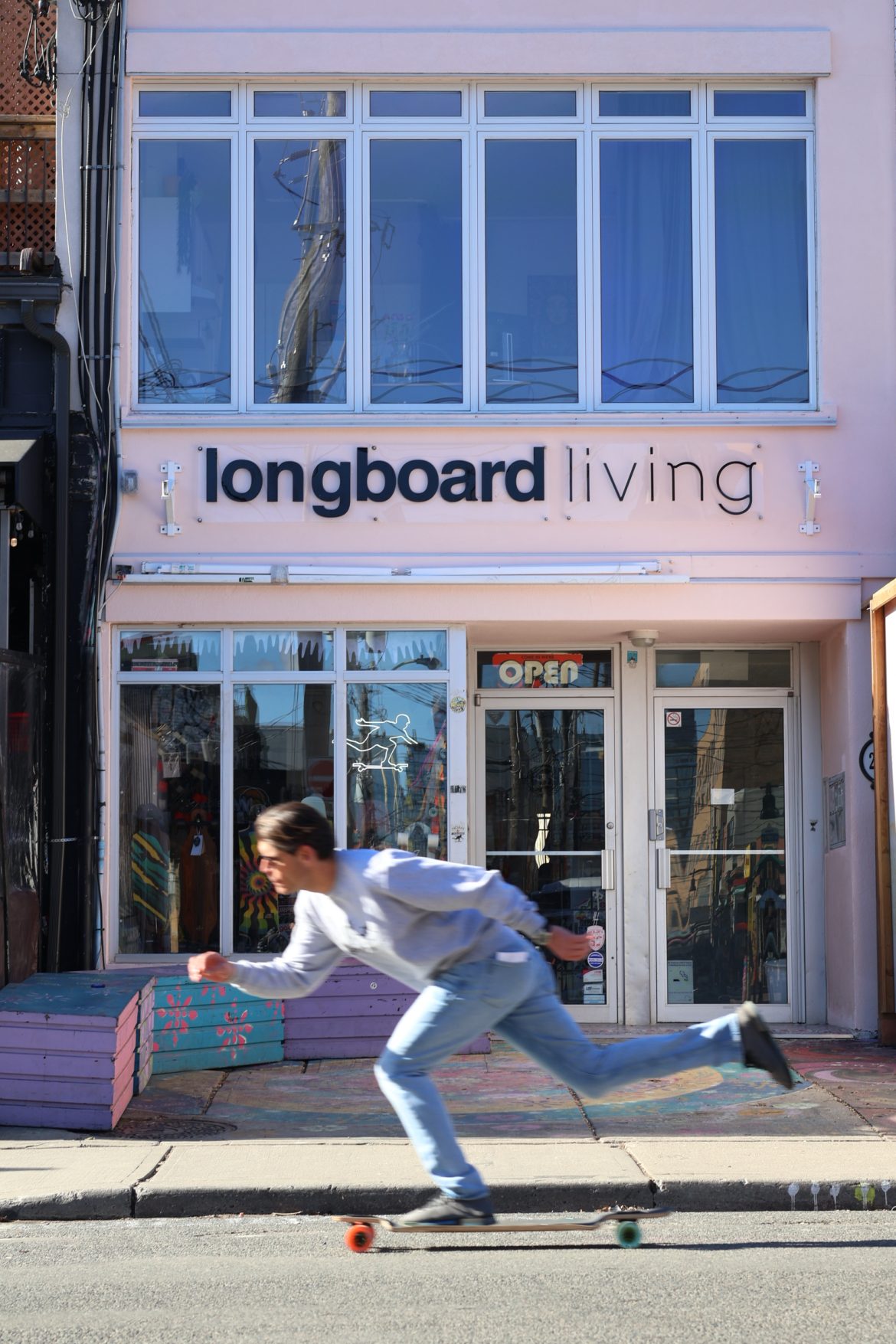Photo Credit: Jona Enriquez
An interview with the creator of Toronto skate brand Longboard Living
Stefanie Menezes, Lifestyle Editor
The end of winter at U of T is marked by many things: the occasional glimpse of sun after a week of rain, a sudden increase in lecture attendance rates, and the sounds of student life returning to the city.
There is one specific brand of sounds heard on campus, however, that denotes the return of spring like no other: the familiar crunch of gravel, the whirring of wheels, and often, the roar of encouragement from a group of skaters in Queen’s Park as one of them lands a trick. According to local skate shop owner Ryan Rubin, skateboarding rebels against the notion of the “traditional sport” in many ways, but the most important difference is that competition is secondary to the community. A diverse range of skater communities exists all around Toronto, welcoming riders with different interests and reasons for riding, but Rubin believes that one side of the board is particularly relevant to students in the city: longboarding for the urban commuter.
Both skateboarding and longboarding have evolved from their traditional capacities into a sustainable and convenient mode of travel to school and work while allowing students to enjoy the “oasis of paved roads” within the city, he explains, sharing that his favourite aspect of skating in Toronto is that it combines this access to transportation with real fitness benefits, like improving your balance and strengthening your muscles. On top of that, skating to class is an eco-friendly alternative to driving, not to mention a way to avoid the stress of Toronto’s infamous public transit delays. There are also mental benefits to making the switch, such as a boost to your mood and energy level. These factors are among many that led Rubin to create his commuter-focused skate brand, Longboard Living, in 2008.
Karna Goswami, Longboard Living’s Community Manager and member of U of T’s own Skateboarding Club shares that he first started skateboarding to get to class on time but discovered that it made the city more accessible to him in other ways. For Goswami, like many skaters who value the community and self-expression found within skate culture, skateboarding in Toronto is a unique way of recontextualizing spaces like office parks and city streets. He says that while he could be miserable on the way to a 9 am class on a Friday, skating has added ease and enjoyment to his early-morning commutes.
Both Rubin and Goswami highlight community as one of the best parts of being a skater. Longboard Living is in the heart of one of Toronto’s most vibrant and creative districts, Kensington Market. It has been a pillar of the city’s skater communities for over a decade. Rubin, who opened the shop in 2010, has witnessed the growth of skate culture over the years and emphasizes the importance of different subgroups connecting to support new skaters.
Skateboarding, like any new activity, can be daunting for those who do not know where to start. Longboard Living aims to make the process easier for new skaters through their “Longboard Learning” beginner lessons and their weekly “Side Street Surfing” group-ride sessions that help new learners connect with other skaters. For those still unsure when entering the shop, the team at Longboard Living is available for a no-pressure chat about how to get started, from finding the right board and equipment to learning basic techniques.
When it comes to advice about how to begin skating, Rubin suggests learning the muscle groups and the basic motion used to push a board forward when riding, called a “kick-squat.” For Goswami, becoming a skater starts with being around the board and keeping it accessible for short trips to the convenience store or around the block – and the first step to that is investing in quality gear that suits both your needs and style.
For beginner or commute-focused skaters, longboarding is a favourable choice for its build, which has softer wheels and a wider body and trucks than a skateboard. This makes the average longboard more accessible and safer to learn. However, Longboard Living’s custom “drop deck” style takes the experience one step further, offering a board lower to the ground, which increases stability and helps riders conserve energy when pushing it forward. This board shape was at the core of Rubin’s initial vision when he collaborated with local builders and artists to develop the first round of custom longboards fifteen years ago.
Despite the shop’s expansion of its products and community services over the years, the philosophy of “Longboard Living” remains the same. Rubin sums it up by saying, “If you can leave your house with your board, you’re going to go on an epic ride, have lots of fun, and you’re going to feel good.” Those features, along with added mobility around the city and the opportunity to meet new people, make longboarding an inviting travel method for every eco-conscious and open-minded commuter this spring.




